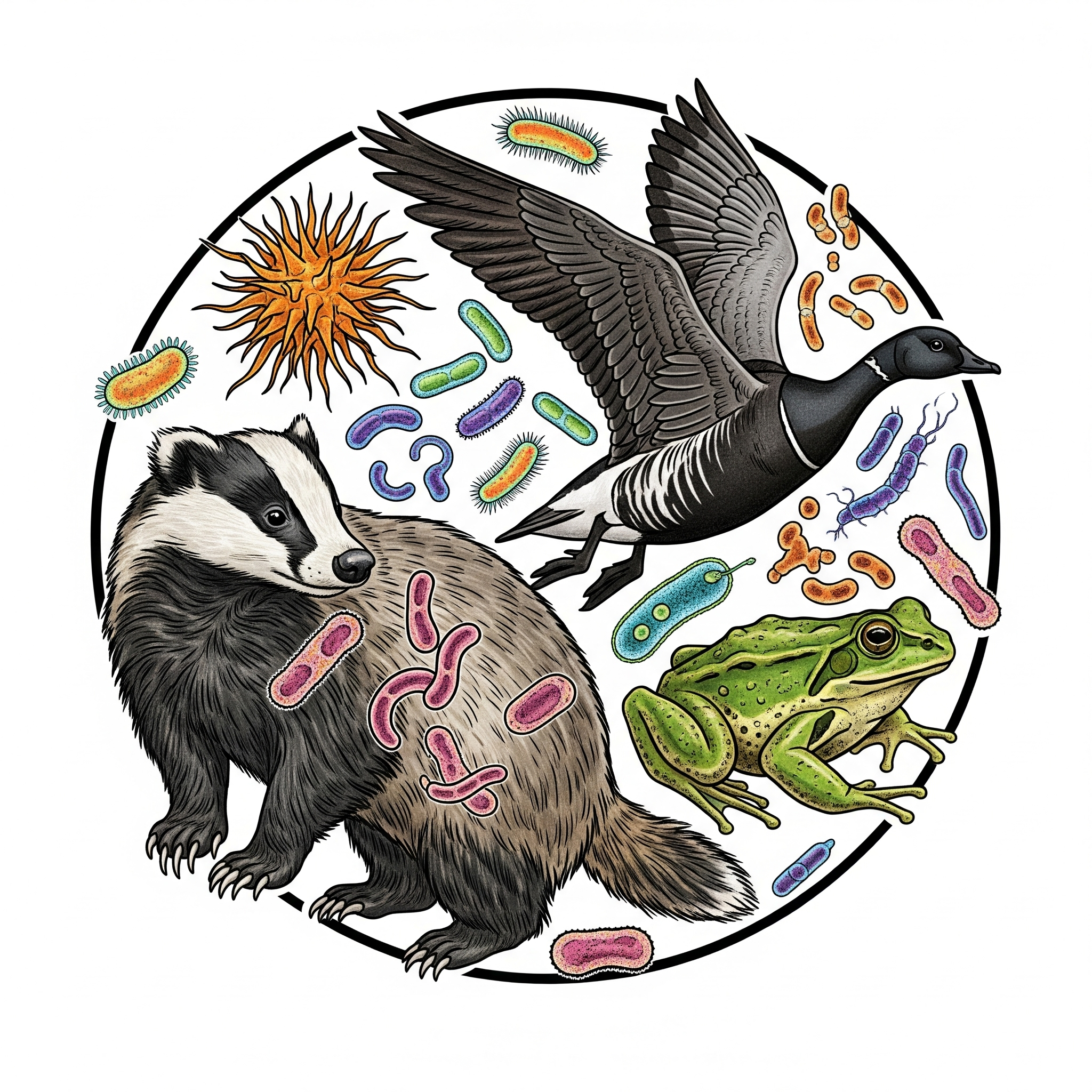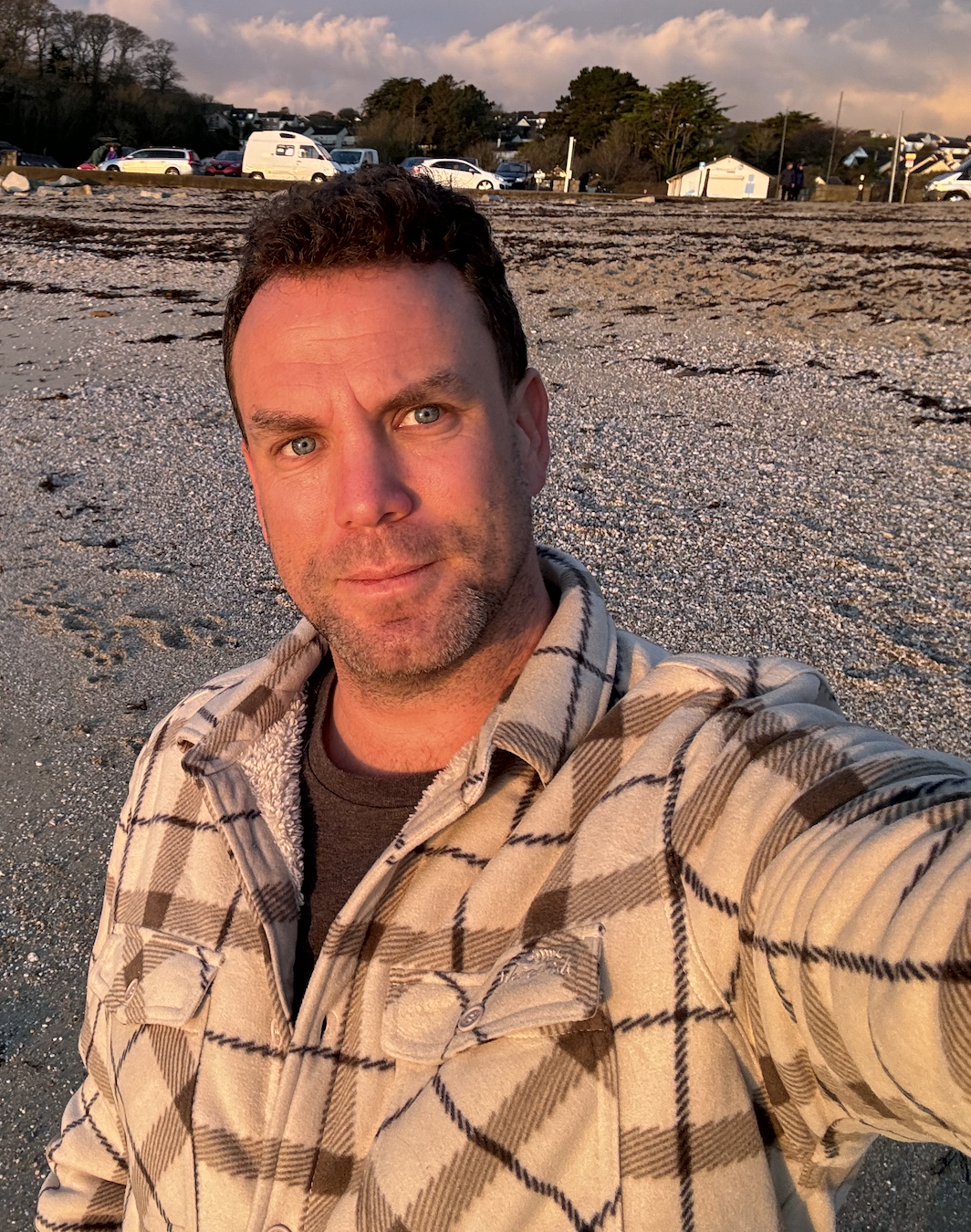Welcome to the Wild Microbiome Lab
 I lead a group of researchers broadly interested in how microbes shape the health of animal hosts. A large focus of our work is on the interaction between host microbiomes and pathogens in wildlife, using amphibians and mammals as model systems. I am also interested in the forces that shape variation among individuals in their microbiome dynamics, and how this variation may influence behaviour, body condition, and response to infection.
I lead a group of researchers broadly interested in how microbes shape the health of animal hosts. A large focus of our work is on the interaction between host microbiomes and pathogens in wildlife, using amphibians and mammals as model systems. I am also interested in the forces that shape variation among individuals in their microbiome dynamics, and how this variation may influence behaviour, body condition, and response to infection.
As a science hobby / side hustle, I use simulation-based approaches to test how best to apply statistical tools like GLMMs to complex ecological data.
For more information, see the Projects and People pages, and Group News below! Recent papers can be found here
If you’d like to join the lab, please get in touch via email.
New PhD Opportunities for 2026
There are several opportunities to join the Wild Microbiome Lab to do a PhD in 2026! Details below! Please get in touch about these opportunities before you apply
- 1. Links Between Infection and Host Microbiome in the European Badger Host-associated microbes can protect animals from pathgoenic infection, but are also highly dynamic - varying in concert with host age, sociality, and their interaction with the environment. This PhD will use European badgers as a model system to i) understand microbiome-pathogen relationships; ii) investigate the role of the environment as a source of both commensal microbes and pathogens, and iii) build these estimates into a spatially and temporally explicit One Health Framework of putative transmission. This PhD would suit a candidate with strong fieldwork and quantitative skills and experience of molecular approaches. There will be plenty of opportunity to design and execute your own sampling strategy with APHA collaborators at Woodchester Park, where the long term badger monitoring project takes place.
Deadline 3rd December and fully funded by BBSRC SWBIO DTP. Lead supervisor Xav Harrison & Co-supervised by Assoc. Prof. Barbara Tschirren Project Description here
- 2. AMR Dynamics in Wild Baboons Antimicrobial resistance is a growing threat to human and animal health, but the forces shaping the incidence and transmmission of AMR remain poorly resolved. As with pathogens, there is likely marked among-individual variation in who carries AMR, and who is more likely to spread it. Using a long-term study of wild babaoons as a model system, you will identify the relative importance of host behaviour, space use (e.g. exposure to urbanisation) and phsyiology as drivers of ‘resistome’ composition and spread. This project benefits from a really strong interdisciplinary supervisory team, and involves fieldwork in South Africa.
Deadline 3rd December and fully funded by BBSRC SWBIO DTP Jointly supervised between Exeter and Swansea with Ines Fürtbauer
- 3. AMR Dynamics in Gamebirds in the UK Millions of gamebirds are released into the wild annually in the UK, and as such may facilitate the spread of both pathogens and AMR. This project will combine field expeirments with extensive profiling of gamebird resistomes in both time and space. These data will be combined in a OneHealth frameowkr with mathematical modelling to understand how gamebirds may facilitate the spread and persistence of AMR in the environment and wildlife. Lead supervisor Barbara Tschirren and co-supervised with Dr Irene Bueno Padilla, Bristol. Deadline 3rd December and funded by BBSRC SWBIO DTP
- 4. Watch this space for a PhD advert on AMR dynamics in migratory birds, coming soon! Migratory birds traverse vast distances and interact with a diverse range of environments and species. This makes them a prime conduit through which transmission of AMR can occur over vast spatial and temporal scales. Despite this, the role of migrants as disseminators of AMR remains poorly understood. This project will combine meta-analysis with a focussed study on individually marked light-bellied Brent geese (Branta bernicla hrota) in Iceland to understand how individual behaviour, diet, social interactions and environmental interactions shape resistome composition and spread in migratory birds. Involves fieldwork in Iceland but also lots of molecular work (qPCR, metagenomics) and statistics (Meta-analysis) so would suit a student with skills and interests in all of these areas. Lead supervisor Xav Harrison & Co-supervised by Prof Stu Bearhop
